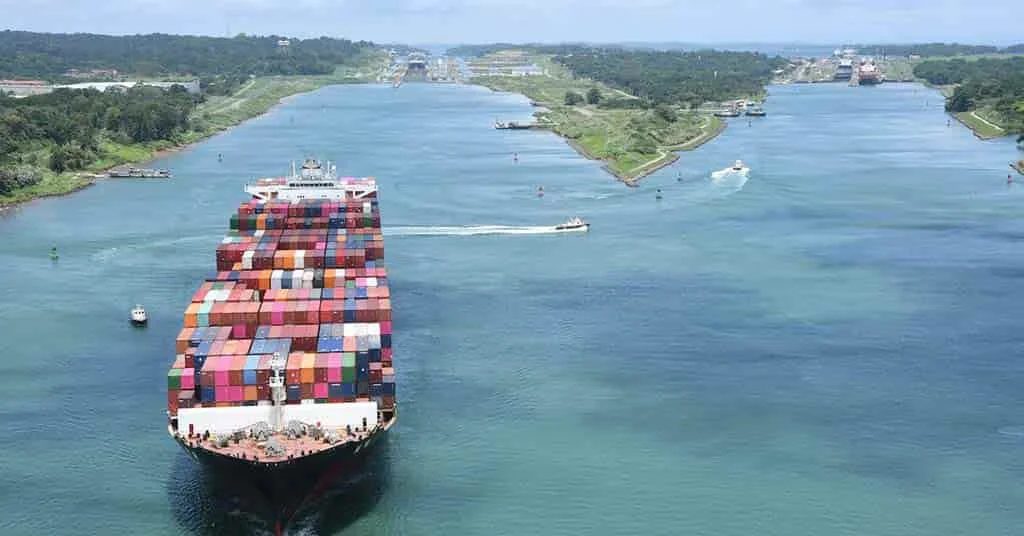Concerns for Key US Petrochemicals as Drought-Induced Bottlenecks Clog Panama Canal
- 25-Aug-2023 3:00 PM
- Journalist: Motoki Sasaki
An extreme drought jeopardizes shipping operations on the critical Panama Canal, a key route for 40% of global cargo ship traffic. Approximately two-thirds of the Canal's traffic involves the United States. Because of the lack of rain and higher temperatures causing water to evaporate from the soil and lakes, the water levels in the freshwater lakes have remained unchanged. This is not usual because, typically, the water levels go up at this time of the year. As a result of this, there are restrictions on ships, and there is more congestion in the waterways. The ACP has implemented limitations on both the depth of ships (draught) and daily passages through the vital waterway that links Asia to the East Coast of the Americas and other locations..
Increasing draught limitations in the Panama Canal are causing container ships to take longer to pass through, leading to significant congestion at major US ports. This problem has a domino effect, stressing supply chains and worsening the demand for berths at ports. As a result, there are challenges in moving goods efficiently, and this is causing the prices of several petrochemicals, such as Benzene, Methanol, and Ethylene, to witness an uptrend. The ChemAnalyst database has shown that the prices of Benzene have increased by approximately 4% on the week ending 25th August, compared to the prices observed in early August 2023. The delay in deliveries and higher operational costs have contributed to the upshift observed in the price realizations of commodities.
On the other hand, situated on the Gulf Coast of the United States, the Port of Houston is a key gateway for trade with the Central and South American regions. It is a major hub for container traffic and bulk commodities. The shallow water conditions in the Panama Canal are resulting in slower ship passages. Ships cannot carry their full loads due to the shallow water, leading to extended wait times or longer routes. Consequently, vessels arrive later than scheduled at the Port of Houston in the USA. This congestion at the Port of Houston is causing a bottleneck, impeding the smooth loading and unloading of ships destined for APAC and European countries.
In 2020, the Panama Canal handled approximately 2.1 million tons of US petrochemicals, making it the third largest source of traffic for US petrochemicals after Canada and Mexico. The majority of this traffic was naphtha, which accounted for about 1.6 million tons. Other major US petrochemicals that transited the Panama Canal in 2020 included gasoline, diesel fuel, and jet fuel. This week on the US Gulf Coast, sources say an ongoing backlog of ships at the Panama Canal impacts naphtha demand. The Canal has to impose increased regulations due to low water levels, which may impact transits into 2024. This follows Gulf Coast reformer-grade heavy naphtha prices dropping to historic lows in mid-August.
On the West Coast, the gasoline market will look for impacts from Tropical Storm Hilary's landfall, which sources expect will impact supply. Last week, reformulated gasoline prices spiked to yearly highs amid cuts at PBF Energy's Torrance refinery and flaring at Marathon's refinery. Prices of polyethylene terephthalate (PET) deposit bottle bales in California have spiked unexpectedly this month, but market players say some sellers are sitting on supply until prices rise, and some buyers are watching to see where prices will go. Supply-driven upticks can be short-lived if not supported by demand, though bale prices were slow to drop in the early summer despite lackluster demand.
According to ChemAnalyst's market intelligence team, the prices of petrochemicals might increase as the port congestion will not vanish soon. Lake Gatun, a vital water source for the Canal, is experiencing its lowest water depth in seven years. Despite the onset of Panama's rainy season, the water level is projected to stay below the average for the past five years until the end of October. In addition, as per the sources, In the coming months and early 2024, El Niño is anticipated to strengthen, potentially causing prolonged challenges for the Panama Canal.



